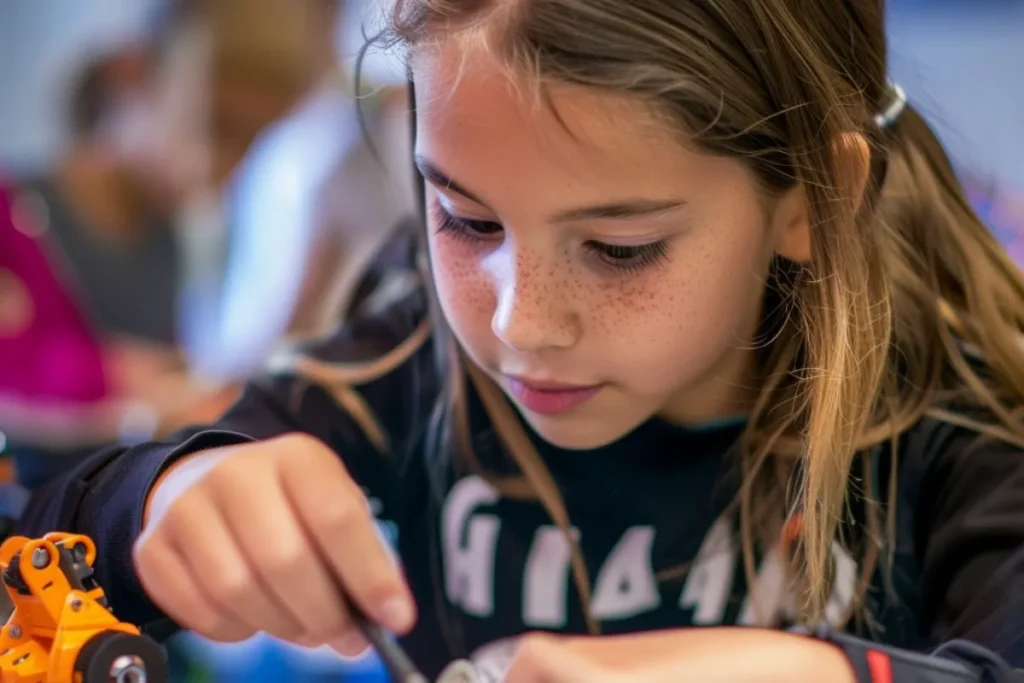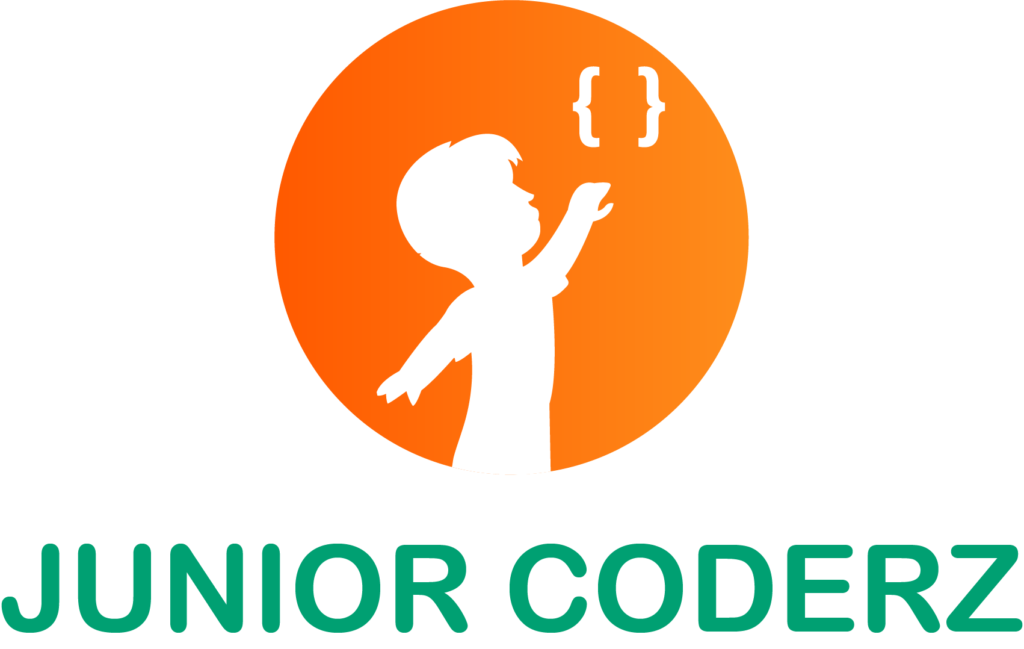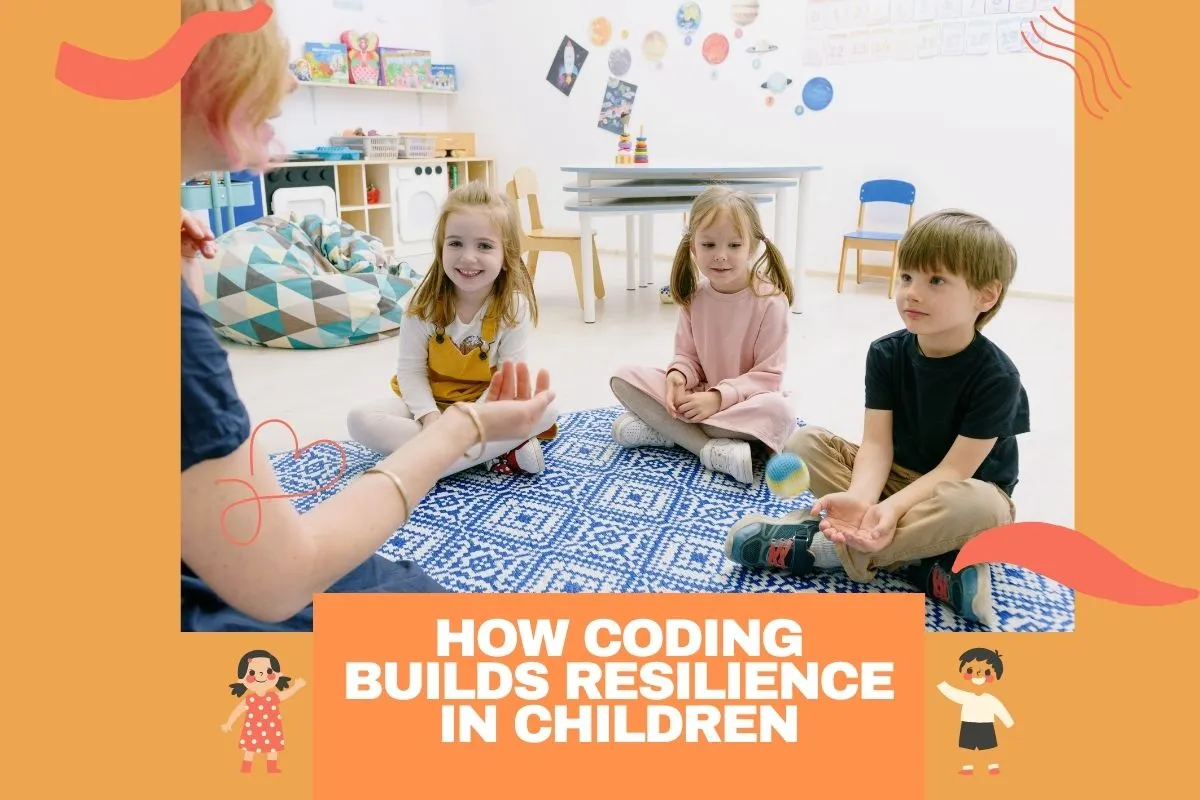Every parent dreams of raising children who don’t give up at the first hurdle, who meet challenges with courage, and who bounce back stronger after setbacks. But in a world of instant gratification, teaching resilience and persistence can feel harder than ever. Here’s the good news: how coding builds resilience in children is often overlooked, yet it’s one of the most powerful ways to shape character, nurture grit, and help kids thrive when faced with obstacles. Coding is not just about computers and apps—it’s a life skill that strengthens determination and emotional growth.
Through trial and error, kids learn persistence, adaptability, and emotional strength. But here’s the part that most people don’t realize coding’s power goes far beyond screens. By encouraging persistence and resilience in programming tasks, children also develop life-long skills for academics, friendships, and careers. Curious to know how? Let’s explore the hidden connection between coding and grit, and why this skill might be the best character-builder your child ever learns.
What Resilience and Persistence Really Mean
Before diving into coding, it’s important to clarify these terms:
- Persistence is the determination to keep going even when progress feels slow or frustrating. It’s that inner “try again” attitude that pushes children to test one more idea, write one more line of code, and not give up until they see results. In coding, persistence transforms repeated errors into stepping stones for eventual success.
- Resilience is the ability to bounce back after setbacks and adapt when things go wrong. Instead of quitting when a program fails, resilient kids analyze what happened, adjust their approach, and return stronger. This skill doesn’t just help in coding, it equips children to face real-world challenges with confidence and flexibility.
Together, they form the foundation for a growth mindset—the belief that abilities can improve through effort and learning. And this mindset is exactly what coding nurtures in children.
How Coding Builds Resilience in Children

1. Debugging Teaches Patience and Persistence
When children write code, errors are inevitable. At first, a bug might frustrate them, but slowly they learn that mistakes aren’t failures, they are clues. This process naturally strengthens coding persistence in kids. Instead of fearing errors, they learn to expect them and treat them as opportunities. Over time, kids stop saying “I can’t do this” and start asking “What can I try next?”
2. Children Resilience Through Coding Projects
From building a simple Scratch game to designing a website, kids face multiple roadblocks. At each step, coding challenges force them to problem-solve and adapt. For example, if a sprite doesn’t move as planned, they might restructure the logic, test new ideas, and celebrate small wins along the way. This is how coding builds resilience in children in action, staying motivated even when progress is tough.
3. How Coding Encourages Grit
Psychologist Angela Duckworth describes grit as passion and perseverance for long-term goals. Coding projects are perfect grit trainers. Unlike quick tasks, coding requires extended focus, repeated trials, and steady effort. Whether it’s debugging a game for a week or perfecting a Python loop, how coding encourages grit is by teaching kids that lasting success is built on repeated effort.
4. Coding and Growth Mindset for Children
Coding reinforces the belief that abilities can improve through practice. When children see how one small change can fix a broken program, they internalize that growth is possible. Parents often report that their children become more confident not just in coding but in homework, sports, and even social skills. This is the essence of coding and a growth mindset for children.
5. Persistence and Resilience in Programming
Every program a child writes is like a mirror of their persistence level. The journey from idea → bug → fix is a repetitive cycle, but it’s also deeply rewarding. Each cycle builds stamina for challenges outside the computer screen. By practicing persistence and resilience in programming, kids prepare themselves for exams, life’s setbacks, and real-world problem-solving.
Benefits of Coding for Kids’ Character Development
Coding doesn’t just teach technical skills. It builds:
- Confidence – Every time a child fixes a bug or sees their project come to life, it feels like a mini-victory. These small wins build self-belief, helping kids trust their abilities not only in coding but in school and other life situations.
- Patience – Programming requires kids to slow down, read instructions carefully, and try different solutions. This nurtures patience and teaches them that good results take time and effort, not instant gratification.
- Creativity – Coding is not just logic it’s also imagination. Kids experiment with animations, games, or apps, learning that there are endless ways to solve a problem. This freedom encourages out-of-the-box thinking and creative confidence.
- Problem-solving mindset – When something doesn’t work, coding trains kids to ask “What else can I try?” instead of giving up. This habit builds resilience and makes problem-solving a natural part of their personality.
This is why the benefits of coding for kids’ character extend far beyond the classroom.
Overcoming Coding Challenges: Kids’ Journey to Grit
Many children feel defeated when their code doesn’t work on the first try. But with gentle guidance, they begin to embrace challenges. Overcoming coding challenges kids face is what makes them stronger. For example, when a game crashes, instead of quitting, they may break the problem into smaller parts, test one variable at a time, and persist until the solution is found. This mirrors how coding builds resilience in children in real life whether it’s learning to ride a bike or preparing for an exam.
Resilience Through Problem-Solving in Coding
Problem-solving is the backbone of coding. Each error forces kids to think in new ways, experiment, and test hypotheses. This cycle is resilience training disguised as fun. Parents often notice that children who engage in coding begin to approach daily problems with more optimism and creativity. Truly, resilience through problem-solving coding is one of the most practical benefits of learning to program.
Practical Ways Parents Can Encourage Persistence in Coding
- Celebrate Bugs – Instead of treating mistakes as failures, remind children that every bug is simply feedback. Each error is a clue that helps them think differently, and celebrating it teaches them that progress comes from learning, not from being perfect the first time.
- Encourage Mini-Goals – Large projects can overwhelm kids, but breaking them into smaller, achievable steps keeps them motivated. Each small milestone feels like a win, giving them the confidence to keep moving toward the bigger picture.
- Model Patience – Children learn best by observing parents. When you show persistence in your own tasks whether fixing something at home or solving a tricky problem you demonstrate that patience and steady effort pay off.
- Use Real-World Examples – Share stories of famous inventors, scientists, or entrepreneurs who failed multiple times before success. These examples inspire kids to see failure as a natural part of the journey toward achievement.
- Enroll in Supportive Programs – Coding classes that focus on fun, creativity, and problem-solving rather than just getting the right answer help children build resilience naturally. A nurturing environment encourages them to try again without fear of making mistakes.
Why JuniorCoderz Is the Right Platform
At JuniorCoderz, we don’t just teach kids coding syntax, we teach them life skills. Our projects are designed to help children practice persistence, resilience, and creative problem-solving. Each lesson is a safe environment where children can make mistakes, learn from them, and emerge stronger.
By choosing JuniorCoderz, parents give their children more than technical knowledge; they give them the mindset to succeed in all areas of life.
Call to Action
Are you ready to help your child grow into a resilient, persistent, and confident problem-solver? At JuniorCoderz, our engaging coding programs build both technical and emotional strength. Let your child experience how coding builds resilience in children—sign up for a free trial class today and watch them thrive!
FAQs
Q. How does coding help children become more resilient?
Coding introduces children to challenges that require problem-solving and adaptation. Each bug they solve teaches resilience.
Q. What age is best to start coding for persistence and resilience?
Children as young as 7 can start simple coding projects. The earlier they begin, the earlier they build persistence habits.
Q. Is coding only for kids interested in computers?
No! Coding is for all children. It improves resilience, creativity, and logical thinking, skills valuable in every field.
Q. How can parents support coding persistence in kids at home?
Celebrate effort over perfection, encourage small projects, and discuss lessons learned from mistakes.
Q. Can coding really improve my child’s character outside academics?
Yes. By facing coding challenges, kids develop patience, grit, and problem-solving skills that apply to all areas of life.

